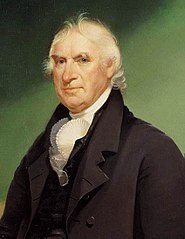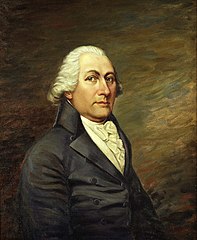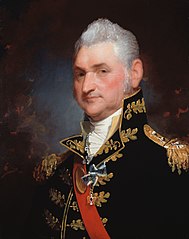1808_United_States_presidential_election
1808 United States presidential election
6th quadrennial U.S. presidential election
The 1808 United States presidential election was the sixth quadrennial presidential election, held from Friday, November 4, to Wednesday, December 7, 1808. The Democratic-Republican candidate James Madison defeated Federalist candidate Charles Cotesworth Pinckney decisively.
| |||||||||||||||||||||||||||||
176 members of the Electoral College 89 electoral votes needed to win | |||||||||||||||||||||||||||||
|---|---|---|---|---|---|---|---|---|---|---|---|---|---|---|---|---|---|---|---|---|---|---|---|---|---|---|---|---|---|
| Turnout | 36.8%[1] | ||||||||||||||||||||||||||||
| |||||||||||||||||||||||||||||
Presidential election results map. Green denotes states won by Madison, Orange denotes states won by Pinckney, and light green denotes states won by Clinton. Numbers indicate the number of electoral votes cast by each state. | |||||||||||||||||||||||||||||
| |||||||||||||||||||||||||||||
Madison had served as Secretary of State since President Thomas Jefferson took office in 1801. Jefferson, who had declined to run for a third term, threw his strong support behind Madison, a fellow Virginian. Sitting Vice President George Clinton and former Ambassador James Monroe both challenged Madison for leadership of the party, but Madison won his party's nomination and Clinton was re-nominated as vice president. The Federalists chose to re-nominate Pinckney, a former ambassador who had served as the party's 1804 nominee, again alongside Rufus King.
Despite the unpopularity of the Embargo Act of 1807, Madison won the vast majority of electoral votes outside of the Federalist stronghold of New England. Clinton received six electoral votes for president from his home state of New York. This election was the first of two instances in American history in which a new president was selected but the incumbent vice president won re-election, the other being in 1828.
Democratic-Republican Party nomination
 | |||||||||||||||||||||||||||||
| James Madison | George Clinton | ||||||||||||||||||||||||||||
|---|---|---|---|---|---|---|---|---|---|---|---|---|---|---|---|---|---|---|---|---|---|---|---|---|---|---|---|---|---|
| for President | for Vice President | ||||||||||||||||||||||||||||
 |
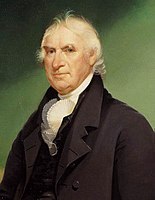 | ||||||||||||||||||||||||||||
| 5th U.S. Secretary of State (1801–1809) |
4th Vice President of the United States (1805–1812) | ||||||||||||||||||||||||||||
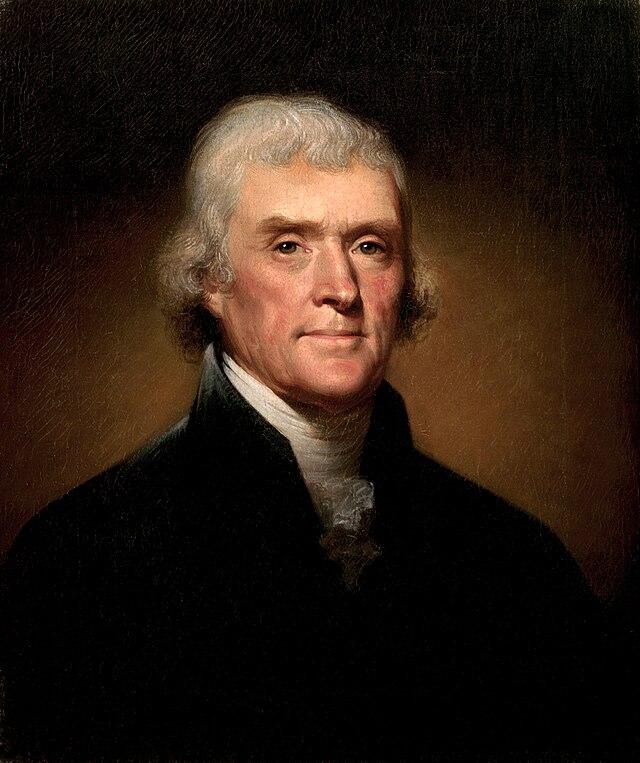
Presidential candidates
- James Madison (Virginia), Secretary of State
- James Monroe (Virginia), Former U.S. Ambassador to the United Kingdom
- George Clinton (New York), Vice President of the United States
Vice-presidential candidates
- George Clinton (New York), Vice President of the United States
- John Langdon (New Hampshire), Governor
- Henry Dearborn (Massachusetts), Secretary of War
- John Quincy Adams (Massachusetts), United States Senator
Caucus
Senator Stephen R. Bradley, who had chaired the congressional nominating caucus during the 1804 presidential election, made a call for the 1808 caucus to the 146 Democratic-Republican members of the United States Congress and Federalist allies. The caucus was attended by 89 to 94 members of Congress.[2]
The caucus was held in January 1808. With the support of outgoing President Thomas Jefferson, Secretary of State James Madison won the presidential nomination over opposing candidates James Monroe and Vice President George Clinton. The caucus voted to give the vice presidential nomination to Clinton over his main opponent John Langdon, although Clinton's supporters believed Clinton would receive the Federalist Party's presidential nomination. The Federalists instead nominated Charles Cotesworth Pinckney that September. A committee of fifteen members was selected to manage Madison's campaign.[2][3]
Seventeen Democratic-Republicans in Congress opposed Madison's selection and the caucus system whose authority to select presidential and vice-presidential candidates was disputed. Clinton also opposed the caucus system.[2] Monroe was nominated by a group of Virginia Democratic-Republicans, and although he did not actively try to defeat Madison, he also refused to withdraw from the race.[4] Clinton was also supported by a group of New York Democratic-Republicans for president even as he remained the party's official vice presidential candidate.[5]
Balloting
| Presidential Ballot | Total | Vice Presidential Ballot | Total |
|---|---|---|---|
| James Madison | 83 | George Clinton | 79 |
| James Monroe | 3 | John Langdon | 5 |
| George Clinton | 3 | Henry Dearborn | 3 |
| John Quincy Adams | 1 |
Federalist Party nomination
 | |||||||||||||||||||||||||||||
| Charles C. Pinckney | Rufus King | ||||||||||||||||||||||||||||
|---|---|---|---|---|---|---|---|---|---|---|---|---|---|---|---|---|---|---|---|---|---|---|---|---|---|---|---|---|---|
| for President | for Vice President | ||||||||||||||||||||||||||||
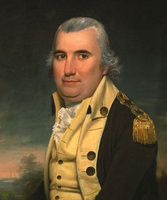 |
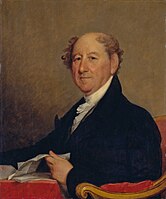 | ||||||||||||||||||||||||||||
| 6th U.S. Minister to France (1796–1797) |
3rd U.S. Minister to Great Britain (1796–1803) | ||||||||||||||||||||||||||||
The Federalist caucus met in September 1808 and re-nominated the party's 1804 ticket, which consisted of General Charles Cotesworth Pinckney of South Carolina and former Senator Rufus King of New York.[6] This was the only time in American history that a defeated major party renominated its losing ticket for a second time.
Campaign
The election was marked by opposition to Jefferson's Embargo Act of 1807, a halt to trade with Europe that disproportionately hurt New England merchants and was perceived as favoring France over Britain. Nonetheless, Jefferson was still very popular with Americans generally and Pinckney was soundly defeated by Madison, though not as badly as in 1804. Pinckney received few electoral votes outside of New England.
Results
Pinckney retained the electoral votes of the two states that he carried in 1804 (Connecticut and Delaware), and he also picked up New Hampshire, Massachusetts, Rhode Island, and three electoral districts in North Carolina besides the two electoral districts in Maryland that he carried earlier. Except for the North Carolina districts, all of the improvement was in New England.
Monroe won a portion of the popular vote in Virginia and North Carolina,[4] while the New York legislature split its electoral votes between Madison and Clinton.[5]
| Presidential candidate | Party | Home state | Popular vote(a), (b) | Electoral vote(c) |
Running mate | |||
|---|---|---|---|---|---|---|---|---|
| Count | Percentage | Vice-presidential candidate | Home state | Electoral vote(c) | ||||
| James Madison | Democratic-Republican | Virginia | 124,732 | 64.7% | 122 | George Clinton (incumbent) | New York | 113 |
| John Langdon | New Hampshire | 9 | ||||||
| Charles Cotesworth Pinckney | Federalist | South Carolina | 62,431 | 32.4% | 47 | Rufus King | New York | 47 |
| George Clinton | Democratic-Republican | New York | — | — | 6 | James Madison | Virginia | 3 |
| James Monroe | Virginia | 3 | ||||||
| James Monroe | Democratic-Republican | Virginia | 4,848 | 2.5% | 0 | None | N/A | 0 |
| Unpledged electors | None | N/A | 680 | 0.4% | 0 | N/A | N/A | 0 |
| Total | 192,691 | 100% | 175 | 175 | ||||
| Needed to win | 89 | 89 | ||||||
Source (Popular Vote): United States Presidential Elections, 1788-1860: The Official Results by County and State[7]
Source (Popular Vote): A New Nation Votes: American Election Returns 1787-1825[8]
Source (Electoral Vote): "Electoral College Box Scores 1789–1996". National Archives and Records Administration. Retrieved July 30, 2005.
(a) Only 10 of the 17 states chose electors by popular vote.
(b) Those states that did choose electors by popular vote had widely varying restrictions on suffrage via property requirements.
(c) One Elector from Kentucky did not vote.
Popular vote by state
The popular vote totals used are the elector from each party with the highest total of votes. The vote totals of North Carolina and Tennessee appear to be incomplete.
| State | James Madison
Democratic-Republican |
Charles C. Pinckney
Federalist |
James Monroe
Democratic-Republican |
Margin | Citation | ||||
|---|---|---|---|---|---|---|---|---|---|
| # | % | # | % | # | % | ||||
| Kentucky | 2,679 | 98.02% | 54 | 1.98% | No ballots | 2,625 | 96.04% | [9] | |
| Maryland | 15,336 | 63.31% | 8,886 | 36.69% | No ballots | 6,450 | 26.62% | [10] | |
| New Hampshire | 12,793 | 47.60% | 14,085 | 52.40% | No ballots | -1,292 | -4.80% | [11] | |
| New Jersey | 18,670 | 55.97% | 14,687 | 44.03% | No ballots | 3,983 | 11.94% | [12] | |
| North Carolina | 8,829 | 51.08% | 7,523 | 43.53% | 931 | 5.39% | 1,306 | 7.55% | [13] |
| Ohio | 3,645 | 60.82% | 1,174 | 19.59% | 1,174 | 19.59% | 2,471 | 41.23% | [14] |
| Pennsylvania | 42,518 | 78.37% | 11,735 | 21.63% | No ballots | 30,783 | 56.74% | [15] | |
| Rhode Island | 2,692 | 46.70% | 3,072 | 53.30% | No ballots | -380 | -6.60% | [16] | |
| Tennessee | 1,016 | 11 | No ballots | [17] | |||||
| Virginia | 15,683 | 78.62% | 761 | 3.81% | 3,505 | 17.57% | 12,178 | 61.05% | [18] |
States that flipped from Democratic-Republican to Federalist
Close states
States where the margin of victory was under 5%:
- New Hampshire, 4.8% (1,292 votes)
States where the margin of victory was under 10%:
- Rhode Island, 6.6% (380 votes)
- North Carolina, 7.55% (1,306 votes)
| ||||||||||||||||||||
| |||||||||||||||||||||||||
| ||||||||||||||||||||
| Method of choosing electors | State(s) |
|---|---|
| Each Elector appointed by state legislature | |
| Each Elector chosen by voters statewide | |
|
State is divided into two electoral districts and half the electors are chosen from each district. |
Kentucky |
| State is divided into electoral districts, with one Elector chosen per district by the voters of that district |
- "National General Election VEP Turnout Rates, 1789-Present". United States Election Project. CQ Press. Archived from the original on November 14, 2016.
- National Party Conventions, 1831-1976. Congressional Quarterly. 1979.
- Sabato, Larry; Ernst, Howard (January 1, 2009). Encyclopedia of American Political Parties and Elections. Infobase Publishing. pp. 302–304.
- Ammon, Harry (1963). "James Monroe and the Election of 1808 in Virginia". The William and Mary Quarterly. 20 (1): 33–56. doi:10.2307/1921354. JSTOR 1921354.
- Kaminski, John P. (1993). George Clinton: Yeoman Politician of the New Republic. Rowman & Littlefield. pp. 281–288. ISBN 9780945612186. Retrieved October 12, 2015.
- Deskins, Donald Richard; Walton, Hanes; Puckett, Sherman (2010). Presidential Elections, 1789-2008: County, State, and National Mapping of Election Data. University of Michigan Press. pp. 49–50.
- Dubin, Michael J. (2002). United States Presidential Elections, 1788-1860: The Official Results by County and State. Jefferson: McFarland & Company. p. 15. ISBN 9780786410170.
- "A New Nation Votes". elections.lib.tufts.edu. Archived from the original on May 13, 2018.
- "A New Nation Votes". elections.lib.tufts.edu. Retrieved October 8, 2020.
- "A New Nation Votes". elections.lib.tufts.edu. Retrieved October 8, 2020.
- "A New Nation Votes". elections.lib.tufts.edu. Retrieved October 8, 2020.
- "A New Nation Votes". elections.lib.tufts.edu. Retrieved October 8, 2020.
- "A New Nation Votes". elections.lib.tufts.edu. Retrieved October 8, 2020.
- "A New Nation Votes". elections.lib.tufts.edu. Retrieved October 8, 2020.
- "A New Nation Votes". elections.lib.tufts.edu. Retrieved October 8, 2020.
- "A New Nation Votes". elections.lib.tufts.edu. Retrieved October 8, 2020.
- "A New Nation Votes". elections.lib.tufts.edu. Retrieved October 8, 2020.
- "A New Nation Votes". elections.lib.tufts.edu. Retrieved October 8, 2020.
- Brant, Irving, "Election of 1808" in Arthur Meier Schlesinger and Fred L. Israel, eds. History of American presidential elections, 1789-1968: Volume 1 (1971) pp 185-249
- Carson, David A. "Quiddism and the Reluctant Candidacy of James Monroe in the Election of 1808," Mid-America 1988 70(2): 79–89
- Election of 1808 in Counting the Votes Archived October 1, 2019, at the Wayback Machine
- Presidential Election of 1808: A Resource Guide from the Library of Congress
- "A Historical Analysis of the Electoral College". The Green Papers. Retrieved March 20, 2005.
- A New Nation Votes: American Election Returns, 1787-1825


